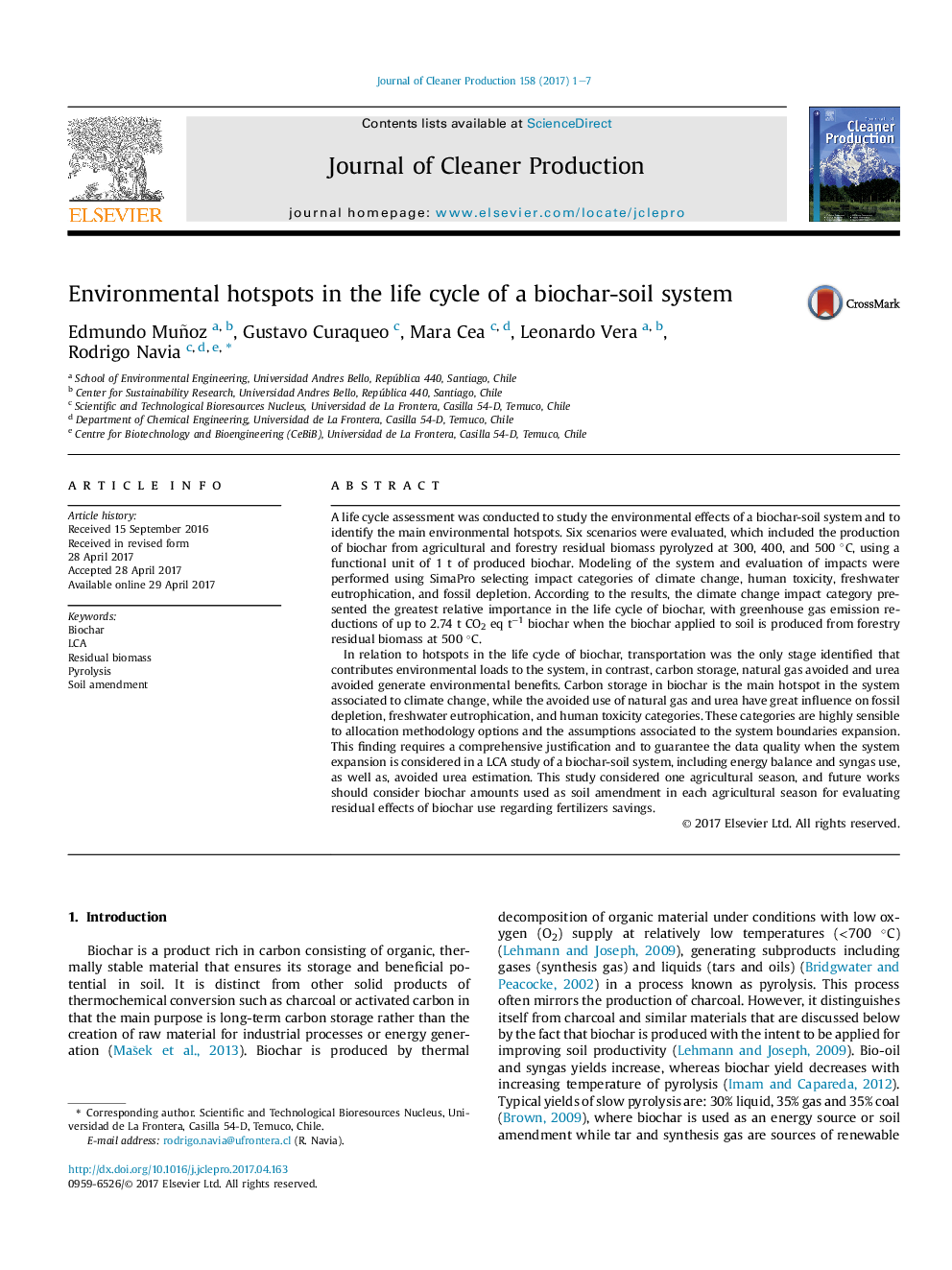| Article ID | Journal | Published Year | Pages | File Type |
|---|---|---|---|---|
| 5479575 | Journal of Cleaner Production | 2017 | 7 Pages |
Abstract
In relation to hotspots in the life cycle of biochar, transportation was the only stage identified that contributes environmental loads to the system, in contrast, carbon storage, natural gas avoided and urea avoided generate environmental benefits. Carbon storage in biochar is the main hotspot in the system associated to climate change, while the avoided use of natural gas and urea have great influence on fossil depletion, freshwater eutrophication, and human toxicity categories. These categories are highly sensible to allocation methodology options and the assumptions associated to the system boundaries expansion. This finding requires a comprehensive justification and to guarantee the data quality when the system expansion is considered in a LCA study of a biochar-soil system, including energy balance and syngas use, as well as, avoided urea estimation. This study considered one agricultural season, and future works should consider biochar amounts used as soil amendment in each agricultural season for evaluating residual effects of biochar use regarding fertilizers savings.
Related Topics
Physical Sciences and Engineering
Energy
Renewable Energy, Sustainability and the Environment
Authors
Edmundo Muñoz, Gustavo Curaqueo, Mara Cea, Leonardo Vera, Rodrigo Navia,
